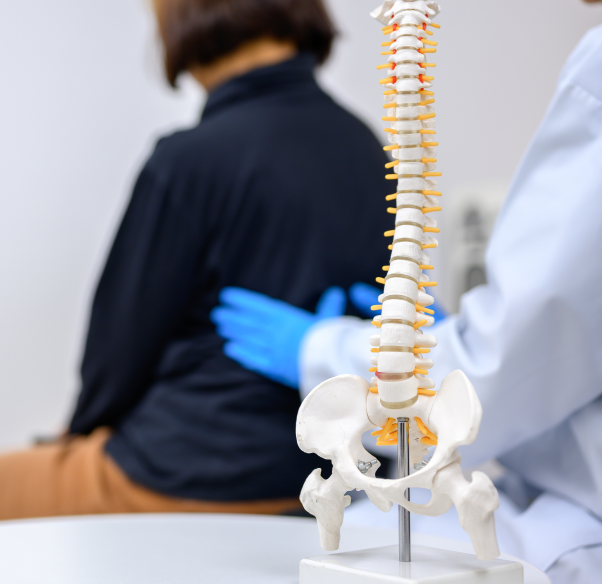A brain tumour is categorized into two types:
- Primary-originates in your brain, these tumours are benign
- Secondary occurs when cancer spreads to the brain from other organs such as the lung or breast
The treatment depends on the type of brain tumour you have, its size and location.
Signs and symptoms
The symptoms depend on the location and size of the tumour. You will have noticeable symptoms when the tumour starts putting pressure on the brain tissue. Headache is a common symptom that worsens in the morning when you wake up, and while coughing, sneezing, or exercising. Other symptoms include:
- Nausea and vomiting
- Vision problems, blurred vision
- Hearing problems
- Loss of sensation or movement in arms and legs
- Speech difficulties
- Behavioural and mood changes
- Hearing problems
- Seizures (especially in adults and in people who don’t have a history of seizures)
- Loss of balance
Risk factors
Only 5% to 20% of all the cancers are hereditary. However, brain tumour does not come in that category. In most people, the cause is not clear, but doctors believe that certain factors increase the risk of developing brain cancer.
- Age-the risk increases as you grow older but some types of brain cancer occur only in children
- Chemical exposure-
- Exposure to radiation-ionizing radiations, such as radiotherapy
- No history of chickenpox-it has been proved that people with a history of chickenpox are less prone to brain cancer
Diagnosis
Your doctor performs the physical examination and reviews your medical history. A neurological examination is performed that includes vision, hearing, balance strength, reflexes, and coordination. The doctor may suggest you go for further tests, such as magnetic resonance imaging (MRI) and computed tomography (CT) scans if brain cancer is suspected. These tests help the doctor to evaluate the tumour and plan the treatment accordingly.
In some cases, a biopsy test is performed to check if the tumour is cancerous or benign.
Causes
Primary brain tumours begin when normal cells acquire errors or mutations in their DNA. These mutations make the cells grow, divide repeatedly, and continue living when healthy cells die. This results in abnormal cell mass, forming a tumour. These tumours are less common than secondary tumours.
There are different types of primary brain tumours depending on the type of cells involved.
Gliomas | Originate in the glial cells that supports the structure of the CNS and provides nutrition to CNS |
Meningiomas | Originates from meninges (membranes surrounding the brain) |
Acoustic neuromas | Develop from nerves that control balance and hearing |
Pituitary adenomas | Develop from pituitary gland; this tumor affects the pituitary hormones |
Medulloblastomas | Most common tumors in children that start in the lower back of the brain |
PETS | Rare tumors that develop from fetal cells of the brain and can occur anywhere in the brain |
Germ cell tumors | Develop during childhood where the testicles or ovaries form, but can move to the brain |
Craniopharyngiomas | Rare, noncancerous tumors that start near the brain’s pituitary gland |
Secondary brain tumours often occur in people with a history of cancer. The most common cancer types that spread to the brain are breast cancer colon cancer, kidney cancer, lung cancer, and melanoma (skin cancer).
Treatment
Surgery is the preferred treatment option for malignant tumours. The surgery is performed, and the whole tumour is removed only for the tumours which are small and easy to separate from the surrounding brain tissue. In other cases, part of the tumour which is safe is removed as it can also reduce the signs and symptoms.
But, you may have infection and bleeding after the surgery and in some cases, the vision may be impaired. But it is not permanent.
Radiotherapy-high energy beams such as X-rays or protons are used to kill tumour cells. Radiation is given to the whole brain if cancer has spread to other parts of the body. Do not worry if you have symptoms such as fatigue, headaches, and scalp irritation, as they are temporary.
Chemotherapy is given either orally or intravenously to kill the tumours. Temozolomide is a commonly prescribed drug.
Rehabilitation
This treatment is necessary as brain tumours develop in parts of the brain that affect your motor skills, speech, vision, and thinking. Your doctor would recommend physical therapy, occupational therapy, and speech therapy to regain the lost skills.
Self-management
After the treatment, you may feel that you have a got little control over your health. Following these tips can improve the quality of your life:
- Learn about your condition and become confident in decision-making.
- Keep your family and friends close, to get emotional and physical support especially if you are still undergoing the treatment.
- Talk your heart aloud when you wish to as it makes you feel happy and comfortable.
- Last but not least, do not lose hope!!! Try to fight cancer and set an example for people like you.
A Brain Tumour is a collection of abnormal cells in the Brain. It accounts for 85 to 90 per cent of central nervous system tumours. Nearly 3 lakh people are diagnosed every year of which 10% are from India. It kills more children and adults under 40 years of age than any other cancer.
A Brain Tumour can be cancerous (malignant) or non-cancerous (benign). When these tumours grow, they cause pressure inside your skull resulting in brain damage. It causes life-threatening problems. The growth rate and location of the tumour determine how it affects the function of your nervous system.



















